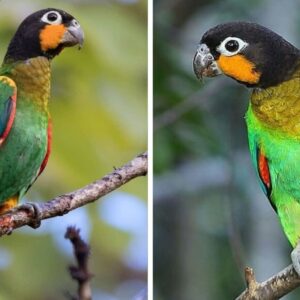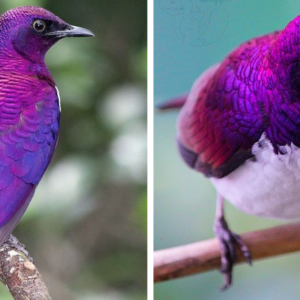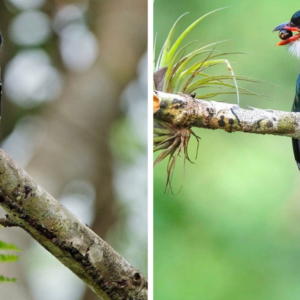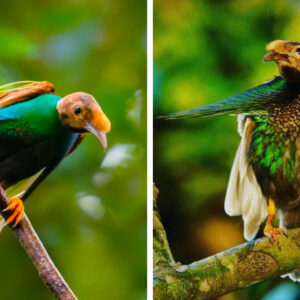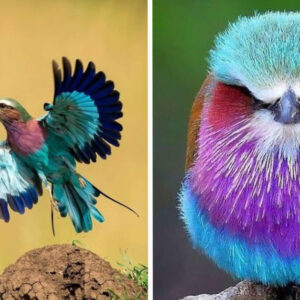

The appearance of a robust bird with subtle shades of brown and grey caught everyone off guard when it suddenly revealed its vibrant orange-gold undertail. It’s none other than the chestnut-breasted mannikin, making an appearance.


The chestnut-breasted mannikin, also known as the bully bird or Lonchura castaneothorax, is a small feathered creature with a black face and brown back. Its thick beak, grey head, and neck add to its distinctive appearance. The bird’s chestnut breast is separated from its white underparts by a black band, and it has a grey crown. Additionally, its rump and tail are golden-orange, and it has a black undertail.
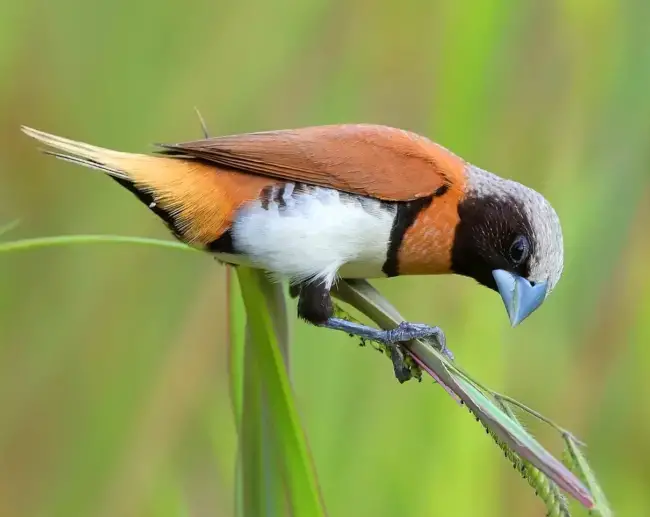

When we compare the colors of male and female, we can see that males are usually olive-brown on their upper part and have a pale color below. They also have a brown buff, but no black face or chest bar. On the other hand, females have a lighter tone than males.
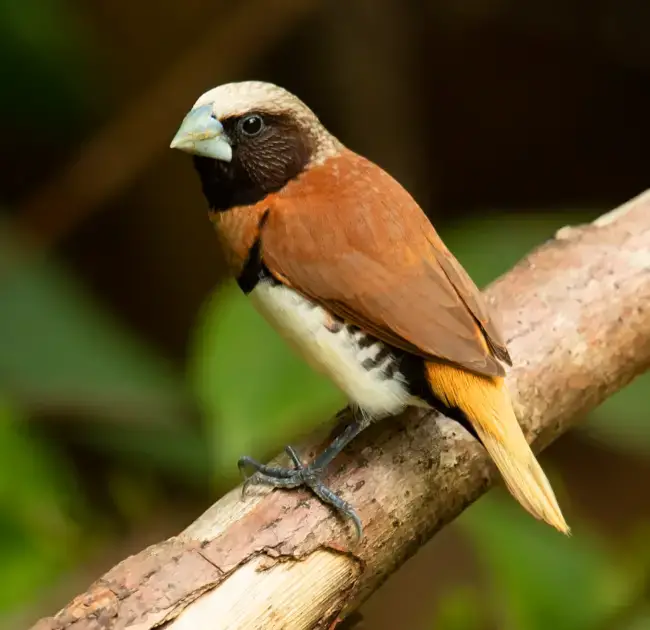

Nonetheless, the Chestnut-breasted Mannikin has extended its habitat to France and French Polynesia. This bird species is typically found in reed patches and weedy regions located near rivers, swamps, and mangroves. Moreover, it has a preference for cereal crops and cane farms as well. During the dry season, it is commonly seen in desert terrain, but it always remains close to a water source.
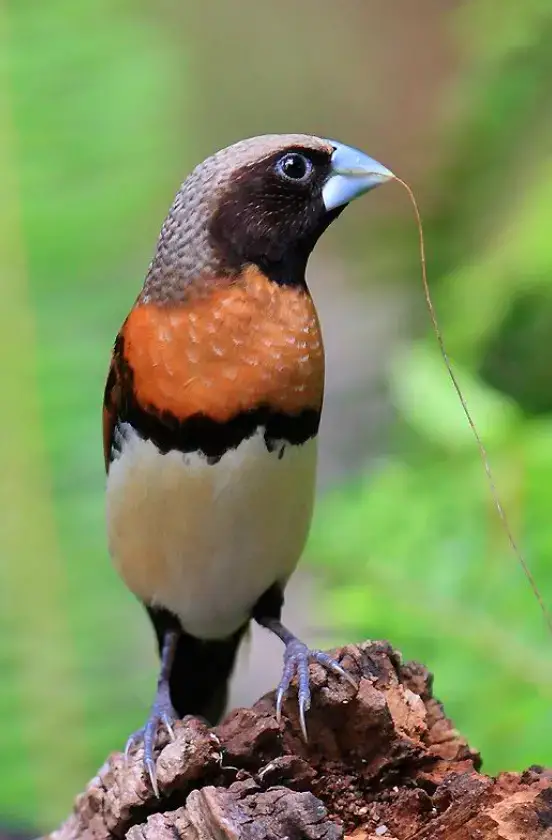

Birds that have a liking for seeds have been recently observed in Papua New Guinea munching on wild sugar cane, millet, and barley.
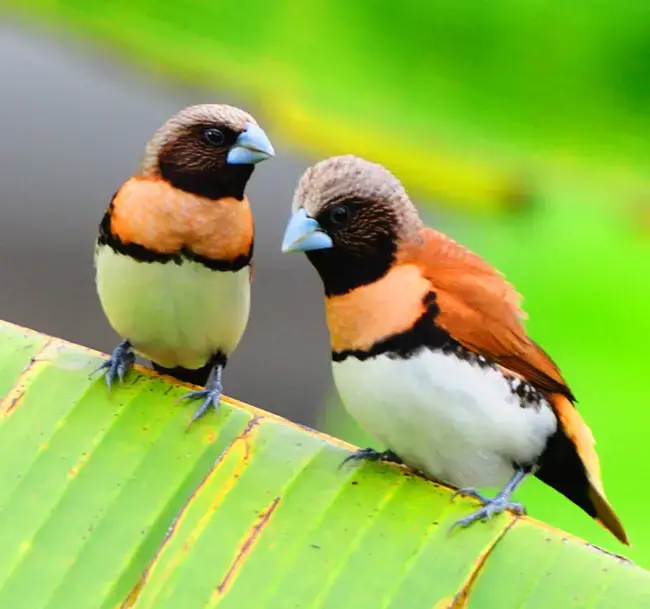

During mating season, these avian creatures construct their nests in close proximity to one another, typically within two meters of the ground, in grassy patches. The nests take on a spherical shape and are composed of green or dry grass blades layered with finer grass. The male and female work together to create the nest and share responsibilities for incubating the eggs and feeding their young hatchlings. Due to their extensive habitat, this species does not meet the IUCN standards for Vulnerable status.


